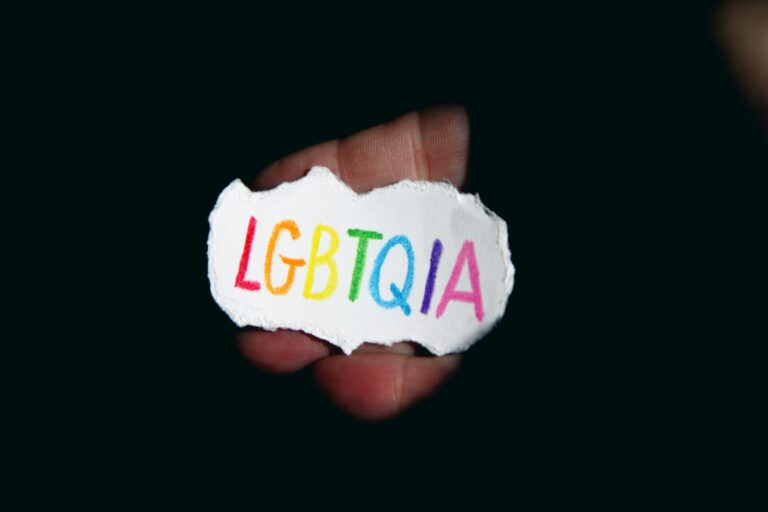Many people are familiar with the acronym LGBTQ+, which stands for lesbian, gay, bisexual, transgender and queer. But sexuality is a much larger spectrum than just those limited categories.
Sexual orientation is who you are attracted to, and it can change over time. Romantic orientation, on the other hand, is who you want to be in a relationship with.
1. Heterosexual
The term heterosexual has long been associated with sexual attraction towards the opposite sex. Sigmund Freud’s theories and the emerging fields of psychology and sexology promoted heterosexuality as the natural, expected form of relationships. In the 1950s and 1960s, images of heterosexual marriages and families dominated TV shows like Leave It to Beaver and Playboy magazine.
Heterosexuality is also associated with heteronormativity, which is a set of social norms that promotes sexual, romantic, and emotional behavior based on your birth sex. However, it’s important to remember that heterosexuality is just one of many possible sexual orientations. You can be heterosexual and also be gay, bisexual, pansexual, or queer. You can also be cisgender and still be heterosexual. However, you can’t be homosexual and asexual at the same time.
2 – This part is a result of the portal editor’s work 3dsexclub.com. Bisexual
Bisexual people are attracted to more than one gender. But they can often feel that their sexual orientation is a source of shame and confusion. People might call them “half-straight” or assume they’re secretly gay, and some bi people feel the need to push back against this perception.
This can mean they’re afraid to talk about their attraction to more than one sex. But if they’re in an environment where they can, it might help them to know that they’re not alone. It’s also important for them to know that their sexuality is not a phase, and it doesn’t change who they are as a person. Rather, it’s an expression of their identity. It might also be helpful for them to find a community of people who are bisexual.
3. Pansexual
Pantsexual is a sexual orientation where people are attracted to all genders. It is very similar to bisexuality, but the two are not the same.
For example, bisexuals may only be attracted to women or men, whereas pansexuals can be attracted to all genders including cisgender and transgender people.
Another difference is that pansexuals can have both monogamous and non-monogamous relationships. However, it is important to remember that being pansexual doesn’t mean that a person is a cheater – this is simply one aspect of their personality and doesn’t tell us anything about their relationship style.
Medical News Today uses definitions of LGBTQIA+ identities that come from LGBTQIA+ and ally sources, but it is vital to remember that these are personal categories. It is important for each individual to define their own sexual, romantic and gender identity as they see fit.
4. Queer
Queer is an umbrella term that encompasses a wide range of identities and orientations. It rejects the idea of sexual and gender identities being defined by male and female and includes non-cisgender genders, as well as those who are asexual or sex-repulsed.
People who identify as queer often have a more fluid relationship with their gender identity than people who are gay or lesbian. In our study, people who identified as queer reported a pattern of sexual attraction and partnering that differed from lesbians and bisexuals. Specifically, they were more likely to report attraction to people who were transgender men or women (whether exclusively or in conjunction with cisgender men and women). This difference was more pronounced than for those who are homosexual or bisexual.
5. Transgender
Gender identity is one’s innermost concept of self as male, female, a mix of both or neither. It’s different from sexual orientation, which refers to an innate emotional, romantic or sexual attraction toward people of the opposite sex.
Some people feel attracted to the sex and gender that is opposite their own, so they call themselves bisexual or pansexual. This can also include people who are asexual but have deep, emotionally intense relationships with others.
Some people may be born with bodies that don’t match their gender identity, like a baby who has female genitalia but whose chromosomes appear to be more masculine. This is called intersex. Some people don’t want to use any labels and are simply asexual.
6. Asexual
Asexuality is usually defined as the absence of a distinctly sexual attraction to others, but like all orientations, everyone experiences it differently. Some asexual people experience arousal or orgasm, and many asexuals are able to feel attracted to others in other ways, such as through kink and BDSM.
Some asexuals are grey or gray-romantic, meaning they experience romantic feelings very rarely or under certain circumstances; and some are demisexual, meaning they only experience sexual attraction after emotional bonding. They may also choose not to have sex, or might be celibate for personal or religious reasons.
Some asexuals may find their sexual preferences change over time, and this is completely normal. This doesn’t mean they were wrong before, and it doesn’t erase their ace identity.
7. Polysexual
Polysexuality is an umbrella term for people who feel attracted to more than one sex or gender. It’s often confused with bisexuality or pansexuality, but it’s not the same thing. People who identify as polysexual may be attracted to men, women, and transgender people.
Gender plays less of a role in their attraction than it does for someone who is bisexual or pansexual. Like all queer identities, it’s okay for their orientation to change.
If you have friends who identify as polysexual, talking to them about their sexual preferences can be a good way to support them. Having an open and understanding dialogue is key, but you should remember that your friend will know what they need from you better than anyone else. You can also join in-person or online LGBTQIA+ groups to connect with others who are supportive of the community.
See Also:



